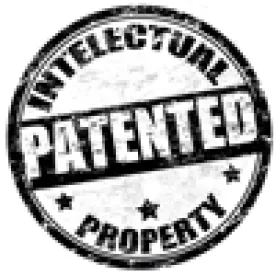In Magna Electronics, Inc. v. TRW Automotive Holdings Corp., No. 1:12-cv-654; 1:13-cv-324 (Dec. 10, 2015), Judge Maloney of the U.S. District Court for the Western District of Michigan granted TRW’s motion for partial summary judgement of invalidity based on obviousness-type double patenting over a later-granted child patent. While it was only a matter of time before the Federal Circuit decision in Gilead was applied in this manner, these circumstances raise important issues that should be given separate consideration. Since Magana and TRW have settled this litigation, we will have to wait for another case to determine whether parent-child obviousness-type double patenting can obliterate Patent Term Adjustment.
The Patent At Issue
The patent at issue was Magna’s U.S. Patent 7,339,149 which was filed November 16, 1999 with a priority claim to February 26, 1993, and issued March 4, 2008, after an interference proceeding. The patent was awarded 498 days of Patent Term Adjustment based on the interference.
The cited patent was U.S. Patent 7,402,786, filed October 6, 2006 as a continuation of the ‘149 patent. The ‘786 patent issued July 22, 2008 with 63 days of Patent Term Adjustment, but expired February 26, 2013 (twenty years from the priority date of the ‘149 patent) because of a Terminal Disclaimer over U.S. Patent 7,388,182, which was a grandchild of the ‘149 patent that did not earn any Patent Term Adjustment.
Thus, the challenged patent was a parent patent that had earned Patent Term Adjustment, while the cited patent was its later-granted child patent with a twenty-year term.
The Gilead Decision
The district court cited the Federal Circuit decision in Gilead Sciences, Inc. v. Natco Pharma Limited, for the principle that the later-granted ‘182 patent could be cited as an obviousness-type double patenting reference against the ‘149 patent. In Gilead the Federal Circuit determined that “a patent that issues after but expires before another patent can qualify as a double patenting reference for that other patent.” Although the Federal Circuit qualified its holding as applying “under the circumstances of this case,” the district court did not address the possibility that a parent-child scenario amounted to different circumstances.
The End Of Patent Term Adjustment?
Parent patents often experience a longer examination process, and may earn considerable Patent Term Adjustment if they are granted after a successful appeal of an examiner’s rejection to the Patent Trial and Appeal Board. On the other hand, a parent patent may have narrower claims than a subsequently granted child patent, and may recite a species (e.g., lead compound, approved product, or commercial embodiment) that is anticipated by a genus claimed in the child patent. Thus, if a child patent can be cited against its parent, it often may be difficult to distinguish the claims on the merits.
But the patents at issue in Gilead were not parent-child patents. Thus, a parent-child scenario may not be “under the circumstances” presented in Gilead. One important issue that was not addressed in Gilead is whether the judicially-created doctrine of obviousness-type double patenting can (or should) take precedence over the statutory grant of Patent Term Adjustment.




 />i
/>i

